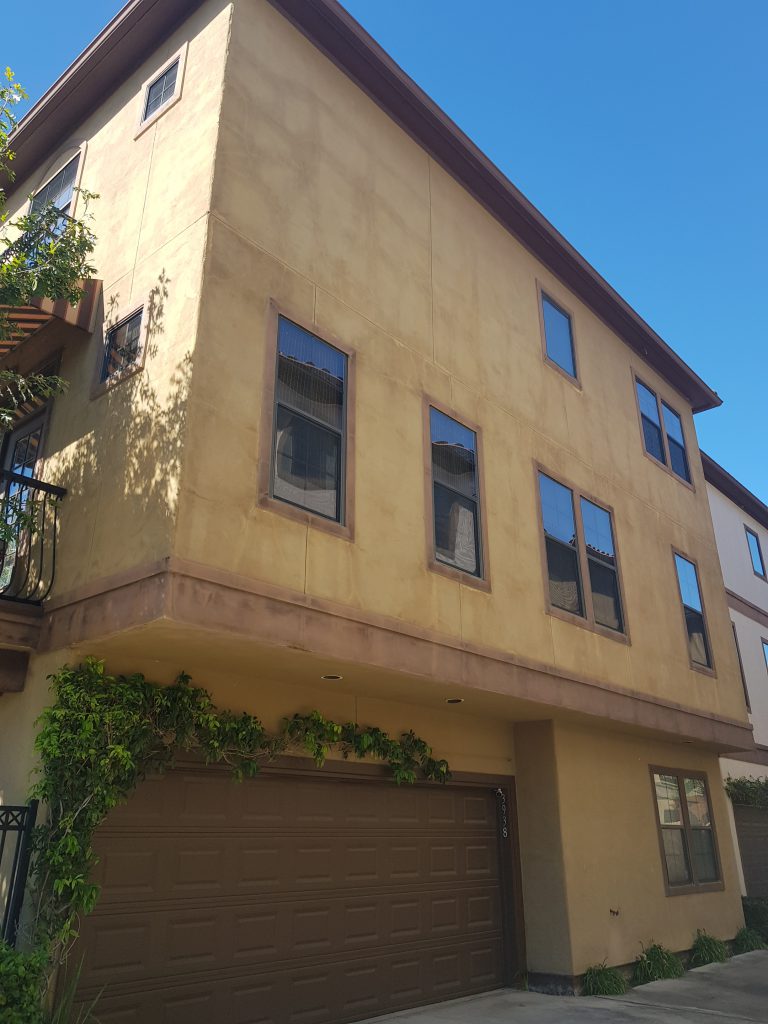Used on the exterior and interior of houses, stucco can give walls and other surfaces a decorative look. It’s made of cement plaster and comes in a variety of colors and textures.

Because stucco is so durable, homebuilders use it on houses across the U.S., but it’s most popular in the Southwest, California and Florida.
Stucco is often associated with different styles of homes, such as Spanish Colonial, Art Deco, Mission and Tudor Revival. However, stucco has a unique history, dating back thousands of years and used in tombs in Egypt, temple walls in Greece and monuments in Rome.
To create the unique look, contractors today make stucco by combining water, Portland cement, sand and water, and sometimes other products. Once mixed, the plaster, which often has the consistency of peanut butter, is applied to surfaces like cinder block, concrete, masonry, clay brick and adobe.
For added support, metal lath is often added to surfaces before stucco is applied. The stucco siding is then given time to cure and dry.
Depending on the look you want, you can apply stucco with a trowel so that the walls and ceiling are completely smooth or add more coats of stucco to create different textures and a rough look.
Sometimes contractors spray on the different layers of stucco with a machine. Specialty moldings can also be applied to the stucco on your home to enhance its architectural features.
How to hire a stucco contractor
Service providers who work on stucco include general contractors, painters, masons and handymen. Expect to pay around $6 to $9 a square foot for stucco installation, according to CostHelper.
When hiring, be sure to get estimates from several stucco contractors and meet them in person. Whether you’re doing an entire house or stucco repair, ask for references from jobs completed for homeowners within the past several months. Also be certain to call those references.
Here are several questions you should ask the references:
• What was it like to work with the stucco contractor and the employees?
• How did the job go and did you have any problems throughout the process?
• Did the contractor stick to your budget?
• Was the stucco project completed in the expected timeframe?
• Do you have any cracks in the stucco now?
- Stucco inspections needed?
Also, ask the contractor to see recent photos of the work he did for those references and other homeowners, too.
Before you sign a contract, check to make sure the contractor complies with your local and/or state licensing board. You also want to find out if your stucco contractor is bonded and insured in case you have problems.
For example, if there’s a lack of sealant around windows, doors and other areas, water can get into the walls and cause damage. Other areas moisture can penetrate include dryer vents, gas and plumbing lines, electrical boxes and satellite dish mounts.
Always ask your stucco contractor the steps they plan to take to prevent moisture from getting into your home.
Before buying a stucco home, your inspector should examine if there are any leaks in your stucco. If there are, you will want the seller to make necessary stucco repairs before you buy.
Any crack that’s 1/16 of an inch wide in stucco should be repaired to prevent water intrusion.
Tips to care for your stucco house:
• Inspect your home annually for any stucco cracks.
• Examine sealed areas like windows, doors, where the chimney and roof meets, and other areas where stucco transitions into another area like a deck, concrete patio or stone wall.
• Call a professional if you notice discoloration, cracks, mildew or mold.
• If you hire another contractor that will penetrate the stucco in any way, be sure they use the proper sealing. Examples include a security alarm company, roofer or window installer.
How to paint stucco
Brightening your landscaping starts with a backdrop, your house. Popular stucco color options today and include brown, teal, yellow, beige, blue and gray.
Talk to your contractor about the options. But before painting begins, you’ll need to wait until your stucco is cured and dry.
Some contractors say you should wait approximately 30 days before painting stucco, but experts say the contractor or painter should test the alkalinity in the mortar after it dries to see if it needs more time to cure.
Contractors test the alkalinity using a pH test kit. They may need to hose down your stucco ever few days to help bring the high alkalinity down before they can paint. The pH level should be less than 10 for the paint to adhere properly.
Painting stucco too soon causes color burnout. It will appear faded and could appear blotchy. The paint may also blister and peel.
Once the stucco is completely dry and the alkalinity is ready for paint, pick out acrylic latex paint samples and have your contractor apply them in squares beside each other. After the paint dries, examine what color looks best during different times of the day, such as morning, afternoon and early evening.
You may also want to test trim colors to determine what compliments the newly painted home.
Over time, you’ll need to repaint stucco because sunlight will cause fading. Adding a fresh coat will make your stucco house look new. If stucco repairs were made, add a coat of primer before you paint.



No responses yet